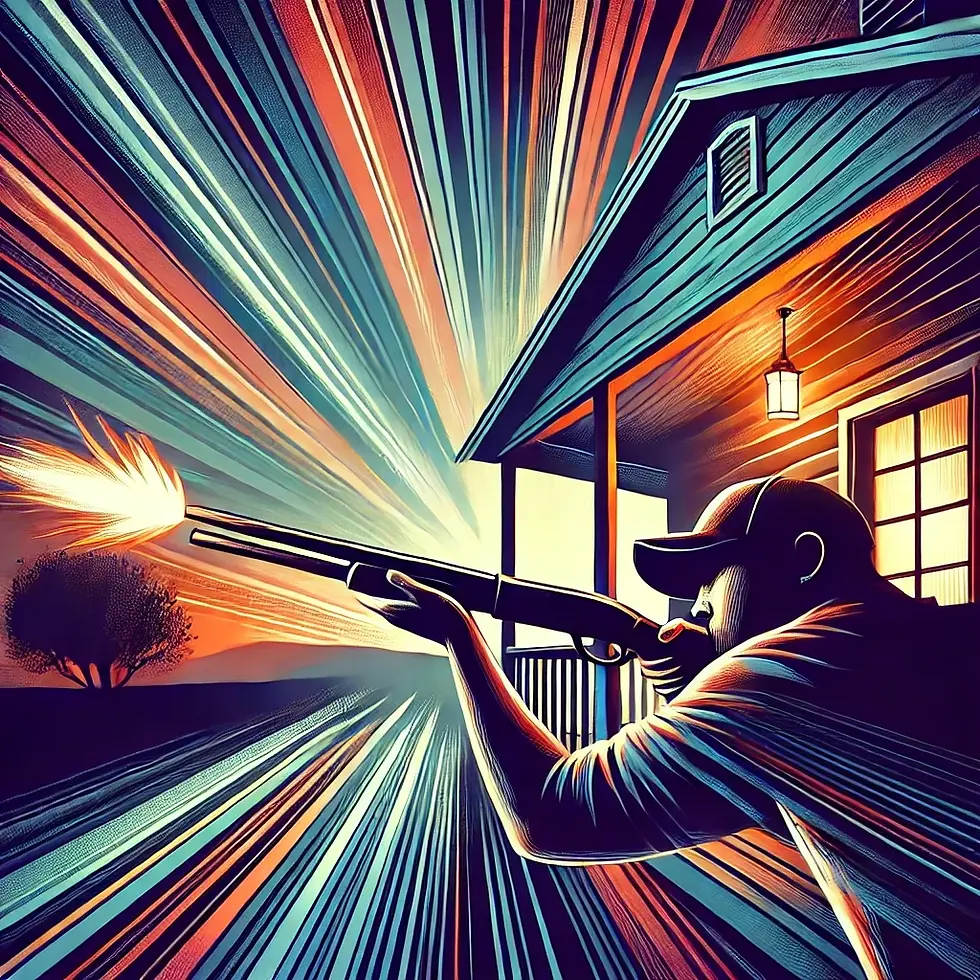Understanding the Risks: Warning Shots
- Phil

- Mar 12
- 3 min read
Disclaimer: This article is crafted for informational and safety purposes only. It doesn’t promote violence—but responsible usage of firearms in accordance with local laws and general firearm safety rules.

Various movies and television series portray scenarios where the protagonist threatens an antagonist with a warning shot, gaining control over the situation swiftly. However, in real-life situations, firing warning shots might not yield the expected result. In some cases, it can potentially escalate the situation, rather than defusing it.
The Myth of the Warning Shot
The illusion portrayed by popular culture suggests that firing a warning shot can intimidate a threat or show that you're serious, often leading to the de-escalation of potential violence. However, this notion could not be further from the truth.
Statistics and real-life incidents show that warning shots can, inevitably, escalate tension, not to mention its potential legal repercussions. The adrenaline rush in such a confrontational scenario can make the threat more volatile instead of diffusing it.
Moreover, the legal implications of warning shots are significant. In many jurisdictions, discharging a firearm within city limits, except for self-defense in a life-threatening situation, is illegal.
Repercussions of Warning Shots: More Danger, Less Safety
Lack of Aim or Safety Measures
Your focus should always be on the imminent threat, and when you decide to shoot in the air or to the side as a warning, it might lead to an inadvertent disaster. Bullets that go up must come down, and there is no surety of where they might land and who they might harm.
Moreover, a shot fired without specific target intent might ricochet and end up harming innocent bystanders or even yourself. As a responsible firearm owner, invest in quality ammunition for your safety and the safety of those around you — Ammo.
Legal Implications
Another clear and ever-present concern is the legal implications of firing a warning shot. Legal parameters around self-defense are significantly clear — it is the use of force to protect oneself from an imminent harm. Given this, many jurisdictions don't consider warning shots as a form of self-defense.
Moreover, discharging a firearm in a public setting can lead to criminal charges, such as reckless endangerment or unlawfully discharging a weapon. Hence, a warning shot can lead you into more legal trouble than you imagined.
Escalation of the Threat
A warning shot might not always be taken as a sign that you're serious. In contrast, it could give the feeling of a bluff. Rather than backing off, the threat may decide to retaliate, possibly leading to a more dangerous and violent situation. In essence, it escalates the situation rather than deescalating it.
Understanding Effective and Safe Firearm Usage
As a responsible gun owner, it is crucial that you understand the safe and effective use of firearms not only to protect yourself but also to ensure the safety of others.
Proper Training
Ensure you receive ample training on firearm usage and safety. Know your weapon and the right type of ammunition it requires. More importantly, understand the dynamics of threat scenarios and how to de-escalate them without resorting to unnecessary violence – Guns.
Defensive Use
Firearms should primarily be used as defensive tools. Warning shots are offensive and can lead to dangerous consequences. It is more effective and generally safer for everyone if a firearm is shown instead of being fired as a warning— it offers time for de-escalation and potentially non-violent conflict resolution.
Being a responsible gun owner involves understanding when to use and when not to use your firearm. Firing warning shots is not only dangerous but can also escalate violence and potentially land you in legal trouble. Remember, a gun is meant to protect and defend—not to intimidate.









Comments